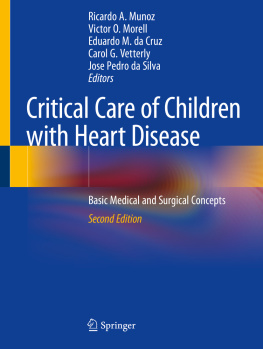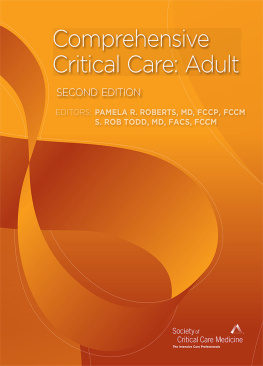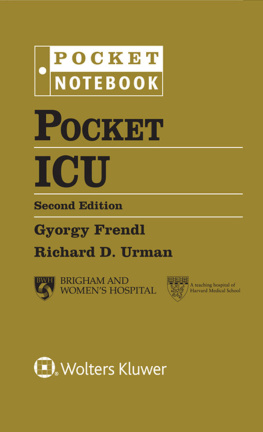Contents
Guide

Pediatric
Neuroimaging
SIXTH EDITION
A. James Barkovich, MD
Professor
Radiology, Neurology, Pediatrics, and Neurosurgery
University of California at San Francisco
Chief, Pediatric Neuroradiology
UCSF Medical Center/Benioff Childrens Hospital
San Francisco, California
Charles Raybaud, MD, FRCPC
Professor of Radiology
University of Toronto
Division Head of Neuroradiology
Hospital for Sick Children
Toronto, Ontario

Senior Acquisitions Editor: Sharon Zinner
Editorial Coordinator: Lauren Pecarich
Marketing Managers: Rachel Mante Leung and Dan Dressler
Production Project Manager: Bridgett Dougherty
Design Coordinator: Elaine Kasmer
Manufacturing Coordinator: Beth Welsh
Prepress Vendor: SPi Global
Sixth Edition
Copyright 2019 Wolters Kluwer
Fifth edition copyright 2012 by Lippincott Williams & Wilkins, a Wolters Kluwer business. All rights reserved. This book is protected by copyright. No part of this book may be reproduced or transmitted in any form or by any means, including as photocopies or scanned-in or other electronic copies, or utilized by any information storage and retrieval system without written permission from the copyright owner, except for brief quotations embodied in critical articles and reviews. Materials appearing in this book prepared by individuals as part of their official duties as U.S. government employees are not covered by the above-mentioned copyright. To request permission, please contact Wolters Kluwer at Two Commerce Square, 2001 Market Street, Philadelphia, PA 19103, via email at (products and services).
9 8 7 6 5 4 3 2 1
Printed in China
Library of Congress Cataloging-in-Publication Data
Names: Barkovich, A. James, 1952- author. | Raybaud, C., author.
Title: Pediatric neuroimaging / A. James Barkovich, Charles Raybaud.
Description: Sixth edition. | Philadelphia : Wolters Kluwer, [2018] | Includes bibliographical references and index.
Identifiers: LCCN 2017041382 | ISBN 9781496337238
Subjects: | MESH: Central Nervous System Diseasesdiagnostic imaging | Infant | Child | Neuroimaging | Tomography, X-Ray Computed | Magnetic Resonance Imaging
Classification: LCC RJ488.5.M33 | NLM WS 340 | DDC 618.92/8047548dc23 LC record available at https://lccn.loc.gov/2017041382
This work is provided as is, and the publisher disclaims any and all warranties, express or implied, including any warranties as to accuracy, comprehensiveness, or currency of the content of this work.
This work is no substitute for individual patient assessment based upon healthcare professionals examination of each patient and consideration of, among other things, age, weight, gender, current or prior medical conditions, medication history, laboratory data and other factors unique to the patient. The publisher does not provide medical advice or guidance and this work is merely a reference tool. Healthcare professionals, and not the publisher, are solely responsible for the use of this work including all medical judgments and for any resulting diagnosis and treatments.
Given continuous, rapid advances in medical science and health information, independent professional verification of medical diagnoses, indications, appropriate pharmaceutical selections and dosages, and treatment options should be made and healthcare professionals should consult a variety of sources. When prescribing medication, healthcare professionals are advised to consult the product information sheet (the manufacturers package insert) accompanying each drug to verify, among other things, conditions of use, warnings and side effects and identify any changes in dosage schedule or contraindications, particularly if the medication to be administered is new, infrequently used or has a narrow therapeutic range. To the maximum extent permitted under applicable law, no responsibility is assumed by the publisher for any injury and/or damage to persons or property, as a matter of products liability, negligence law or otherwise, or from any reference to or use by any person of this work.
LWW.com
To our families,
without whose inspiration
none of this
would have been possible.
Contributors
James F. Bale Jr., MD
Professor
Pediatrics and Neurology
University of Utah and Eccles Primary Childrens Medical Center
Salt Lake City, Utah
A. James Barkovich, MD
Professor
Radiology, Neurology, Pediatrics, and Neurosurgery
University of California at San Francisco
Chief, Pediatric Neuroradiology
UCSF Medical Center/Benioff Childrens Hospital
San Francisco, California
Matthew J. Barkovich, MD
Fellow in Neuroradiology
University of California at San Francisco
San Francisco, California
Van V. Halbach, MD
Clinical Professor of Radiology and Neurological Surgery
University of California at San Francisco
San Francisco, California
Gary L. Hedlund, DO
Adjunct Professor
Department of Radiology
University of Utah
Director
Pediatric Neuroradiology
Department of Medical Imaging
Primary Childrens Medical Centre
Salt Lake City, Utah
Christopher P. Hess, MD, PhD
Professor and Chairman
Department of Radiology & Biomedical Imaging
University of California, San Francisco
San Francisco, California
Steven W. Hetts, MD
Associate Professor
University of California, San Francisco
Chief of Interventional Neuroradiology
Mission Bay Hospitals
University of California, San Francisco
San Francisco, California
Philip M. Meyers, MD
Professor
Radiology, Neurological Surgery, and Neurology
Co-Director, Neuroendovascular Service
Colombia University Medical Center/New York-Presbyterian Hospital
New York, New York
Zoltan Patay, MD, PhD
Professor of Radiology
Department of Radiology
College of Medicine
University of Tennessee Health Science Center
Chief, Section of Neuroimaging
Department of Radiological Sciences
St. Jude Childrens Research Hospital
Memphis, Tennessee
Charles Raybaud, MD, FRCPC
Professor of Radiology
University of Toronto
Division Head of Neuroradiology
Hospital for Sick Children
Toronto, Ontario
Erin Simon Schwartz, MD
Associate Professor
Department of Radiology
University of Pennsylvania School of Medicine
Clinical Director, Magnetoencephalography
Department of Radiology
The Childrens Hospital of Philadelphia
Philadelphia, Pennsylvania
Gilbert Vzina, MD
Professor of Radiology and Pediatrics
George Washington University
Director of Neuroradiology
Childrens National Medical Center
Washington, District of Columbia
Duan Xu, PhD
Associate Professor of Radiology and Biomedical Imaging
Chief, Imaging Research for Neurodevelopment Laboratory
University of California, San Francisco
San Francisco, California









